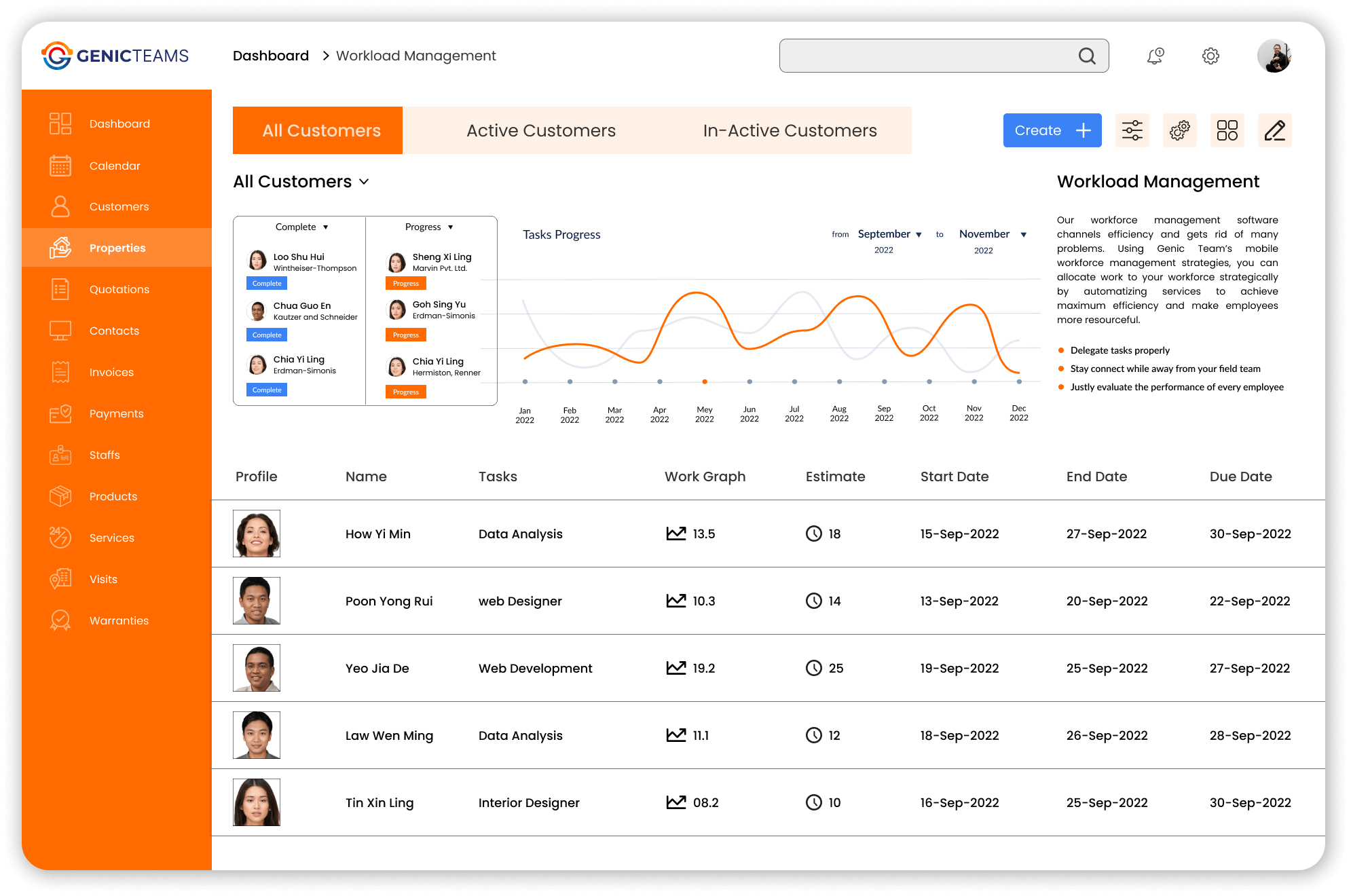
Workforce management based software transforms how small businesses run daily tasks. It cuts chaos, boosts work speed, and improves results. With the right tools, owners organize time, track attendance, and use resources smartly. This tool makes handling office and remote teams smooth. Small businesses often juggle limited time and money. Managing workers by hand wastes energy and creates mistakes. Workforce management software fixes these problems. Thus, it speeds up processes and gives exact reports.
Let’s discover how this software benefits small businesses. Therefore, we will also explore how it helps manage remote workers easily.
What Is Workforce Management Software?
Employee management software helps businesses schedule work and manage tasks. Consequently, it keeps track of attendance, checks progress, and makes planning simple. Small businesses can use it to stay organized and save time. This tool takes away messy paperwork. It gives clear numbers to make decisions quickly. Managers can assign tasks and check progress at any moment.
It stops mistakes that come from doing work manually. At the same time, workers get fair schedules. With this software, small businesses can finish tasks faster.
How Workforce Management Software Helps Small Businesses
Running a small business can be tough. For instance, workforce management software makes managing employees much easier. It creates work schedules automatically and saves effort. The software shows how well workers perform. Owners use these reports to make better choices. It also stops payroll and time errors, which cost money.
Small businesses get smarter with this tool. It lets them focus on big goals instead of small tasks. That’s how workforce management software helps small businesses work smarter and grow.
Managing Remote Workers with Workforce Management Software for Small Businesses
Handling remote workers may seem tricky, but this software makes it simple. To start with, it tracks work time, productivity, and goals. Workers record hours, and managers keep track of tasks. As a result, everyone stays honest and focused. In addition, this tool also makes sharing updates easy.
Moreover, businesses can talk clearly with remote teams. For instance, employee management software organises schedules effectively, so workers don’t miss tasks. Because of this, managing remote workers with workforce management software for small businesses becomes much easier. Ultimately, it helps teams stay connected and focused. In the end, this tool not only improves communication but also ensures everyone remains productive, making remote work smoother and more efficient for businesses of all sizes.
Benefits of Workforce Management Software for Small Businesses
1. Better Schedules
Creating schedules becomes fast and easy. Therefore, the software avoids understaffing and overstaffing problems.
2. Smarter Time Tracking
It tracks work hours with no mistakes. Workers get paid fairly for their time.
3. Greater Productivity
The software removes boring tasks. Employees spend more time working on important jobs. Managers see clear results.
4. Saves Money
It stops payroll errors. Small businesses save money by avoiding overpaying or underpaying workers.
5. Happier Employees
Workers receive fair schedules and fast updates. Thus, they feel valued and satisfied, so they stick around.
Challenges of Workforce Management Software for Small Businesses
1. High Costs
Buying software costs money, and small businesses might worry about the price at first. Moreover, the initial investment can feel overwhelming for businesses on a tight budget. However, considering long-term benefits like improved productivity can make the cost worthwhile.
2. Learning the System
It takes time to learn new software, and teams need training to use it well. Additionally, some employees may find the process frustrating or time-consuming. Yet, with consistent practice and proper guidance, the learning curve becomes manageable.
3. Integration Problems
The new system might not work with old tools, causing potential disruptions. For instance, businesses may need updates or entirely new tools to ensure compatibility. Nevertheless, careful planning can help prevent these integration challenges.
4. Dependence on Internet
Most systems work online, meaning a good connection is essential. Furthermore, a slow or unstable internet connection can disrupt daily operations. Therefore, businesses should invest in reliable internet services to avoid such issues.
5. Keeping Data Safe
Employee data needs protection, so businesses must pick software with strong safety features. Additionally, they should implement strict security protocols to prevent breaches. Thus, choosing software with regular updates and robust encryption becomes critical.
Managing Remote Workers with Workforce Management Software for Small Businesses
Remote workers need tools to stay connected. Employee management software keeps teams in sync. Managers watch progress and check results without bossing too much. Shared dashboards show updates and goals. Everyone knows what to do and when. This tool closes gaps between remote workers and office teams. Managing remote workers with workforce management software for small businesses makes teamwork better. Ultimately, it builds trust and keeps everyone productive.
How Workforce Management Software Helps Small Businesses Streamline Work
Small businesses often lose time on paperwork, which can slow down productivity. As a result, employee management software speeds up tasks like scheduling and tracking. In addition, it cuts errors and shows progress in real time, making it easier to stay on top of things. Managers decide quickly because they have the right numbers and insights at hand. This ultimately improves decision-making and enhances efficiency. This tool helps small businesses run smoothly by streamlining processes. Moreover, teams share tasks fairly, so work gets done fast, reducing unnecessary delays.
Workers also feel happier with clear tasks and schedules. Consequently, they experience less confusion and frustration. Productivity goes up, and teams stress less about confusing work. With clear direction, everyone knows what to do and when, resulting in better overall performance.
The End Note
Overall, workforce management software makes life easier for small businesses. It speeds up scheduling, tracks time, and manages tasks quickly. With fewer mistakes, businesses work smarter and save money. For remote teams, this software builds trust and clear communication. It keeps managers updated and workers focused on goals. However, some challenges exist. Businesses need to handle costs, training, and data security carefully. Yet, most problems disappear with good planning.
In the end, staff management software helps small businesses grow faster. It saves time and energy for more important goals. For small teams aiming to succeed, this tool is a great choice to move forward.



